Affiliate links on Android Authority may earn us a commission. Learn more.
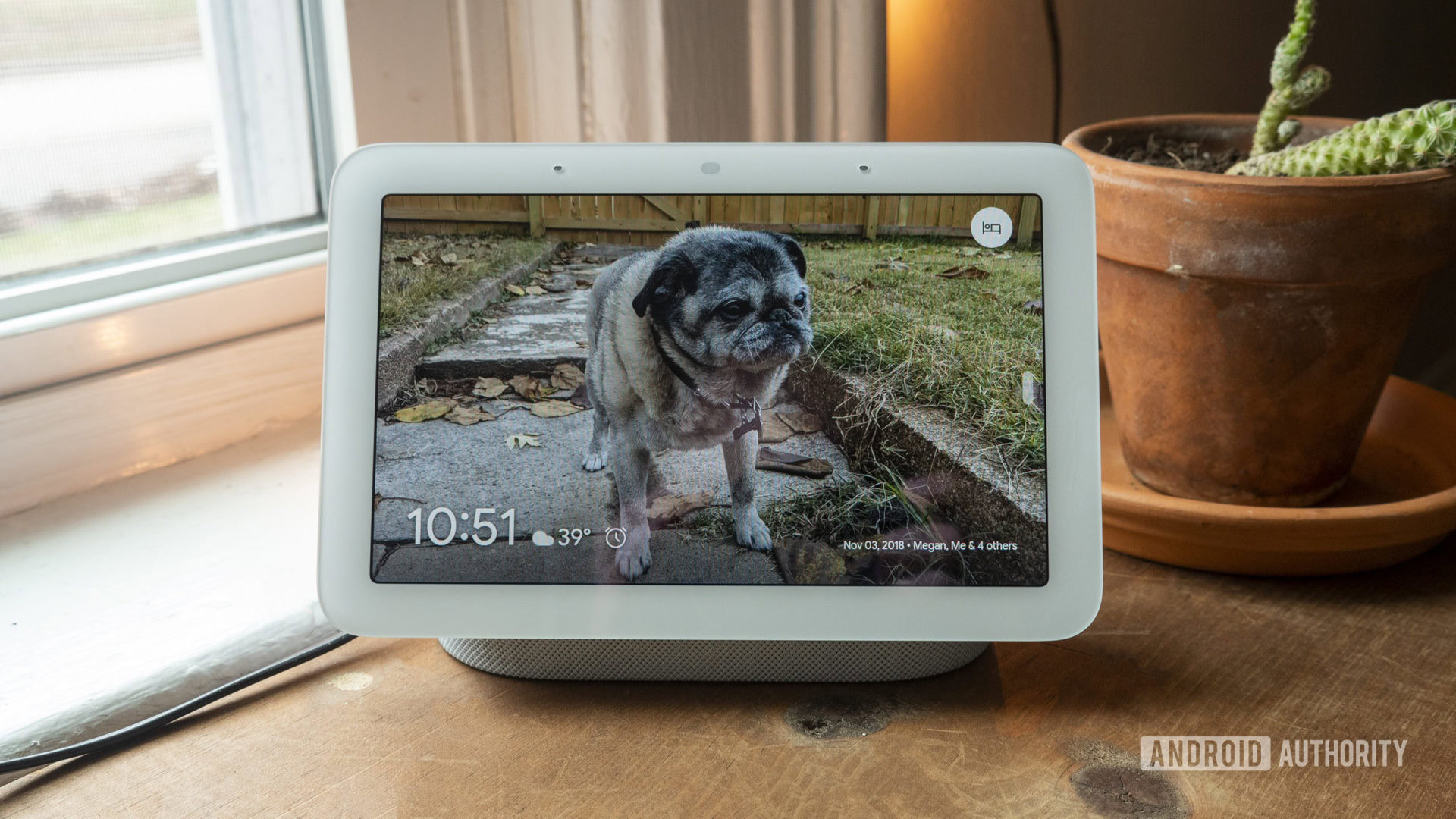


Google Nest Hub (second generation)
What we like
What we don't like

Google Nest Hub (second generation)
Google got a lot of things right with its first-gen Google Nest Hub smart display. Back in 2018, the Nest Hub (then Home Hub) provided a cheap and easy way for those in Google’s ecosystem to access their smart home devices, Google Photos albums, and, of course, the Google Assistant. The first Nest Hub was very much a “me too!” device — Amazon’s Echo Show was on the market for over a year by the time Google showed up.
Google hopes to differentiate itself even more from the crowd with the second-generation Nest Hub by offering a few things the competition doesn’t. Read our full Google Nest Hub (2nd gen) review to see if the company’s efforts paid off.
Update, May 2023: We’ve updated this review with details relating to a new alternative from Google itself.
What you need to know about the Google Nest Hub (2nd gen)
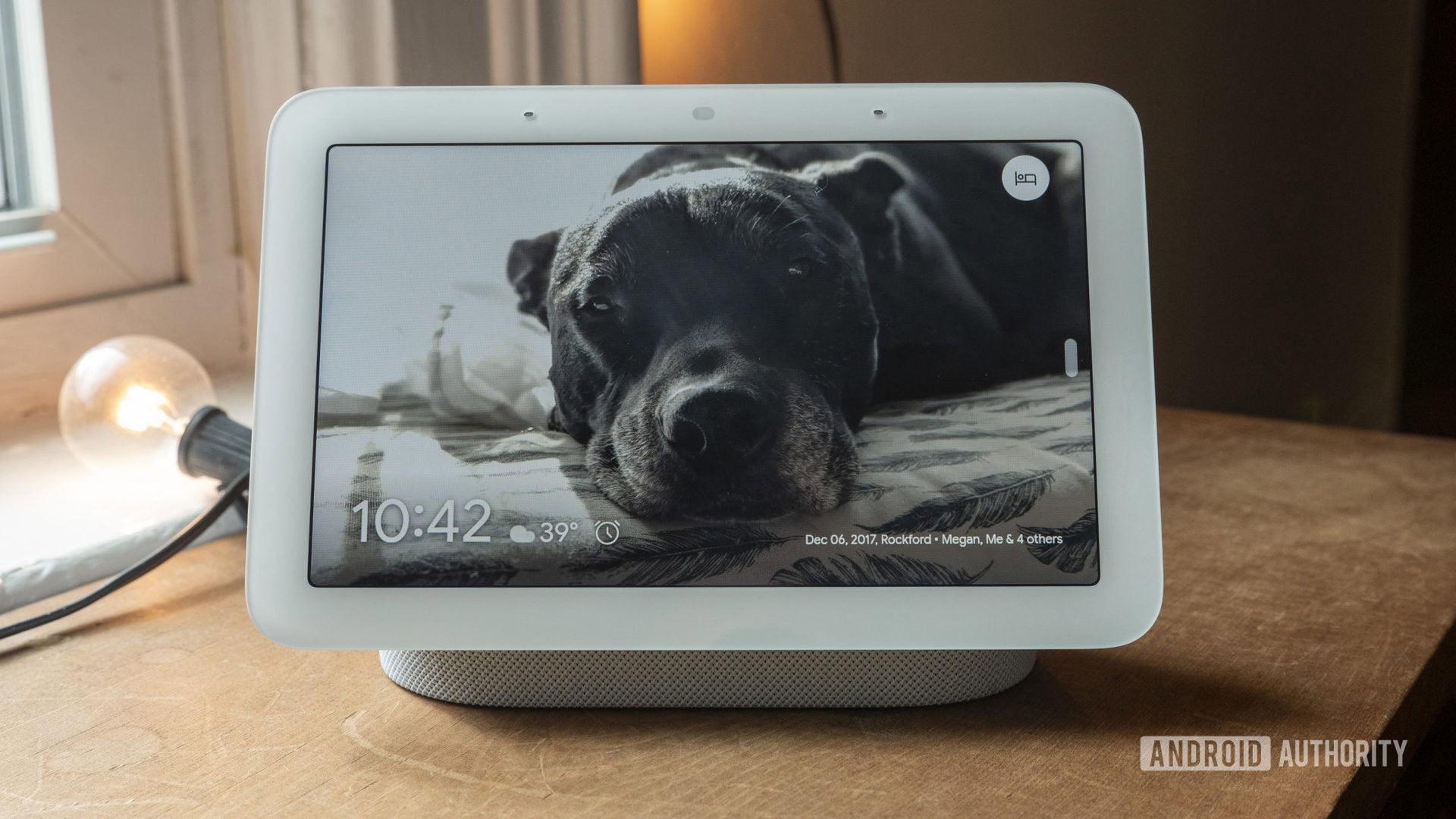
- Google Nest Hub (second generation): $99.99 / £89.99 / €99.99
The Google Nest Hub (2nd gen) is the company’s third smart display. It resembles the original, though audio output has been improved, there’s a faster processor onboard, it supports hands-free gesture controls, and it can track your sleep using a few new sensors.
Google wants this new Nest Hub to be placed on your bedside table. It’s the perfect spot for the device to be used as a digital photo frame, and it needs to be pointed directly at your mattress for sleep tracking. Unless, of course, you don’t plan on using the sleep tracking functionality. Then you can put it wherever you’d like.
Outside of sleep tracking, there are hardly any new software features that aren’t already available on existing Nest Hubs. So, this Google Nest Hub (2nd gen) review will primarily focus on the new features.
The Google Nest Hub (2nd gen) costs $99.99 and can be found at Best Buy, B&H, the Google Store, and other retailers. That’s $50 cheaper than the original Nest Hub at launch and $130 cheaper than the larger Nest Hub Max. You can buy the device in various countries including the US, UK, India, Canada, Germany, France, and Australia.
The new Nest Hub’s Sleep Sensing will eventually be a paid feature. All Google Nest Hub (2nd gen) buyers will get a free preview of the service through 2023. In 2024, Google will start charging for it. To access it, you’ll need to sign up for a Fitbit Premium membership, which costs $9.99/month or $79.99/year.
How is the design?
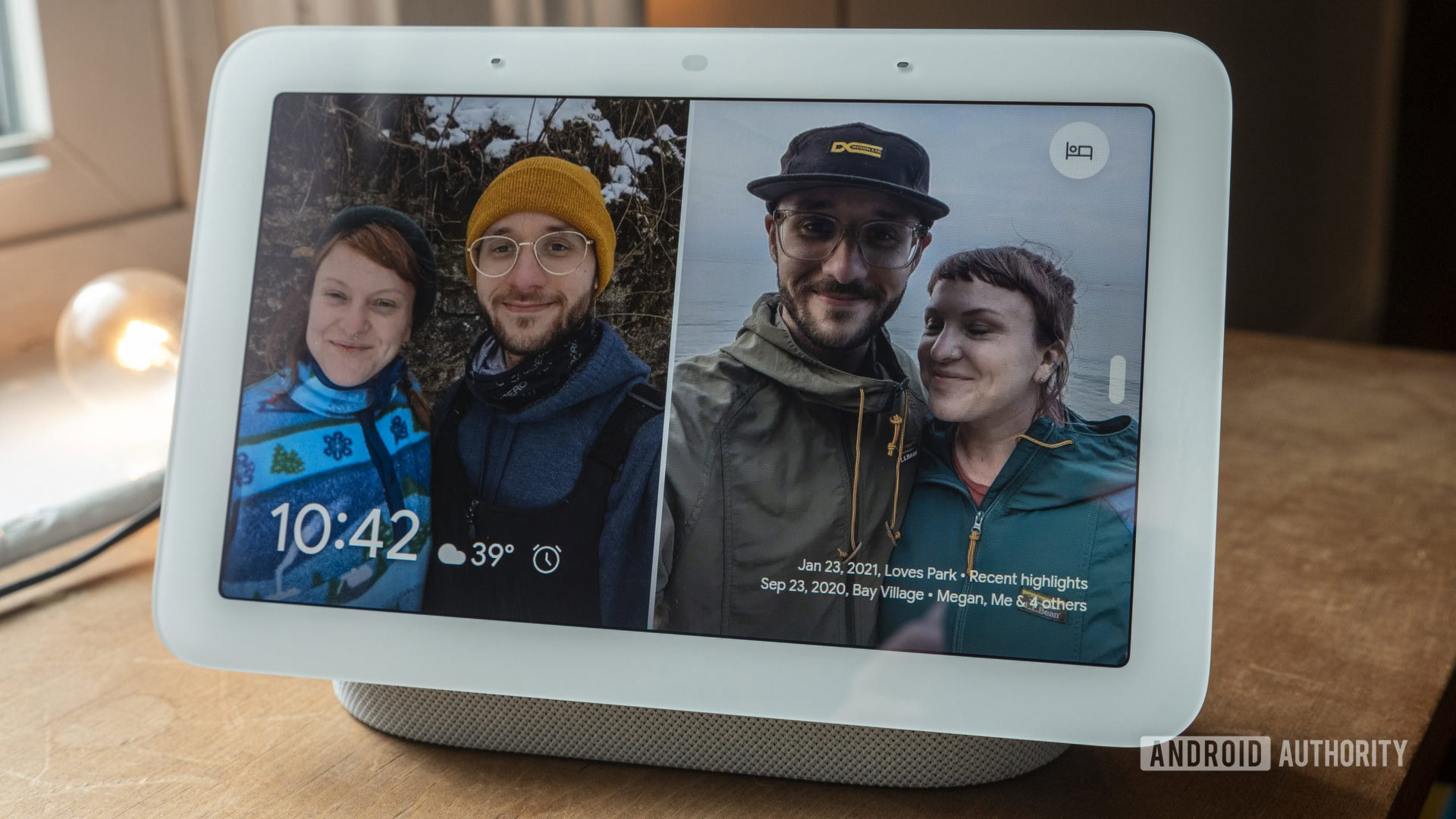
You won’t find too many aesthetic differences between the first- and second-generation Nest Hubs. The new Nest Hub has the same 7-inch 1,024 x 600 resolution touchscreen display and chunky bezels as the original. It’s still perched atop a fabric-covered speaker “stand.” It also still has a physical microphone mute switch and volume keys around the back.
The display is fine. It’s good for a $99 bedside device, but those looking for a high-resolution screen will be underwhelmed. However, that’s not really the point of this device, now is it?
If you like the look and feel of the other devices in the Nest Hub family, you'll like the second-gen Nest Hub.
Google says it kept the sizable bezels around the display because a majority of first-gen Nest Hub owners love using it as a digital photo frame. Indeed, my favorite use for the Nest Hub is as a bedside photo gallery that flips through my favorite images in Google Photos.
If you like the look and feel of the other devices in the Nest Hub family, you’ll like the second-gen Nest Hub. It’s not what you’d call an elegant piece of technology, but it is functional and blends in well with other items you’d find on your bedside table.
Using the built-in Soli sensor, the second-gen Nest Hub is able to detect motion gestures, just like the Google Pixel 4. Google calls them Quick Gestures on the Nest Hub. I’ve found them to be more reliable than the Pixel 4’s gesture implementation — which is welcome news — though they are limited to just two gestures. You can play/pause media by tapping the air in front of the display and also dismiss timers and snooze alarms by swiping in front of the display. It can take a time or two to perform the gestures in the right way, but once you have them down, they’re easy enough.
The new Nest Hub does not have a built-in camera, just like the first-gen model. This means you’re unable to make video calls on the display like you can with the Nest Hub Max. That might be a huge dealbreaker for some of you, and I completely understand why it would be. Personally, I prefer it. It’s weird enough having a radar pointed at your sleeping body every night as you fall asleep. For me, the presence of a camera (even if it’s turned off/blocked and not tracking anything) would feel like a step too far.
How’s the sound quality?
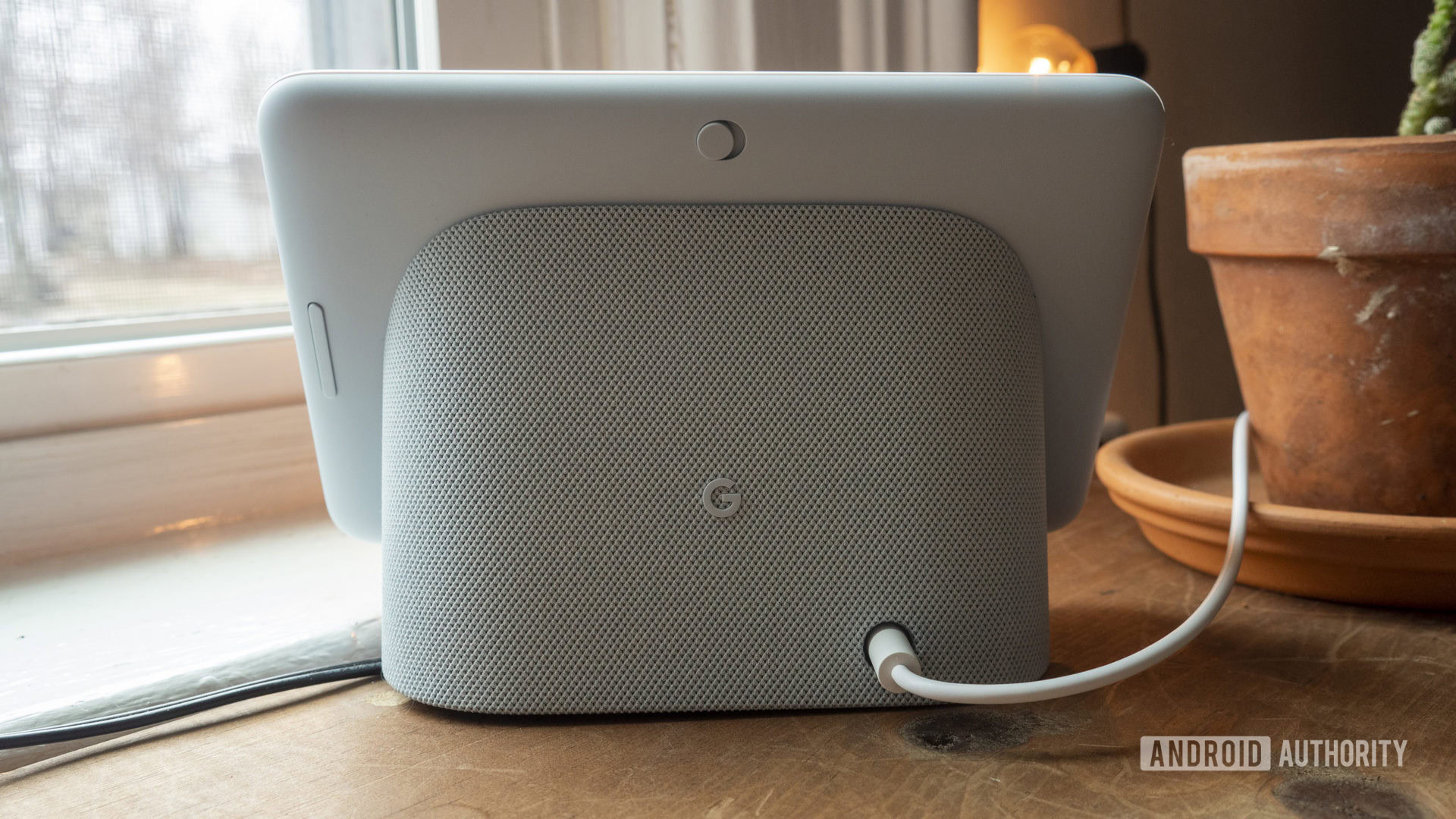
Sound quality on the Nest Hub (2nd gen) is noticeably better than the first-gen model. Audio is projected loudly and clearly. Google says it also offers 50% more bass than the original. I don’t know if I can hear the 50% difference, but I did notice an improvement. I’d say the sound quality is a step ahead of the Nest Mini but a step behind the Nest Audio.
A third microphone has been added to this model to help pick up your voice prompts more frequently. This, coupled with the new on-device machine learning chip, means the Nest Hub’s Google Assistant almost always picks up my voice prompts and answers quickly. I ran into missed voice commands all too often with the original Nest Hub, but thankfully that wasn’t an issue with the new one.
How accurate and helpful is Sleep Sensing?
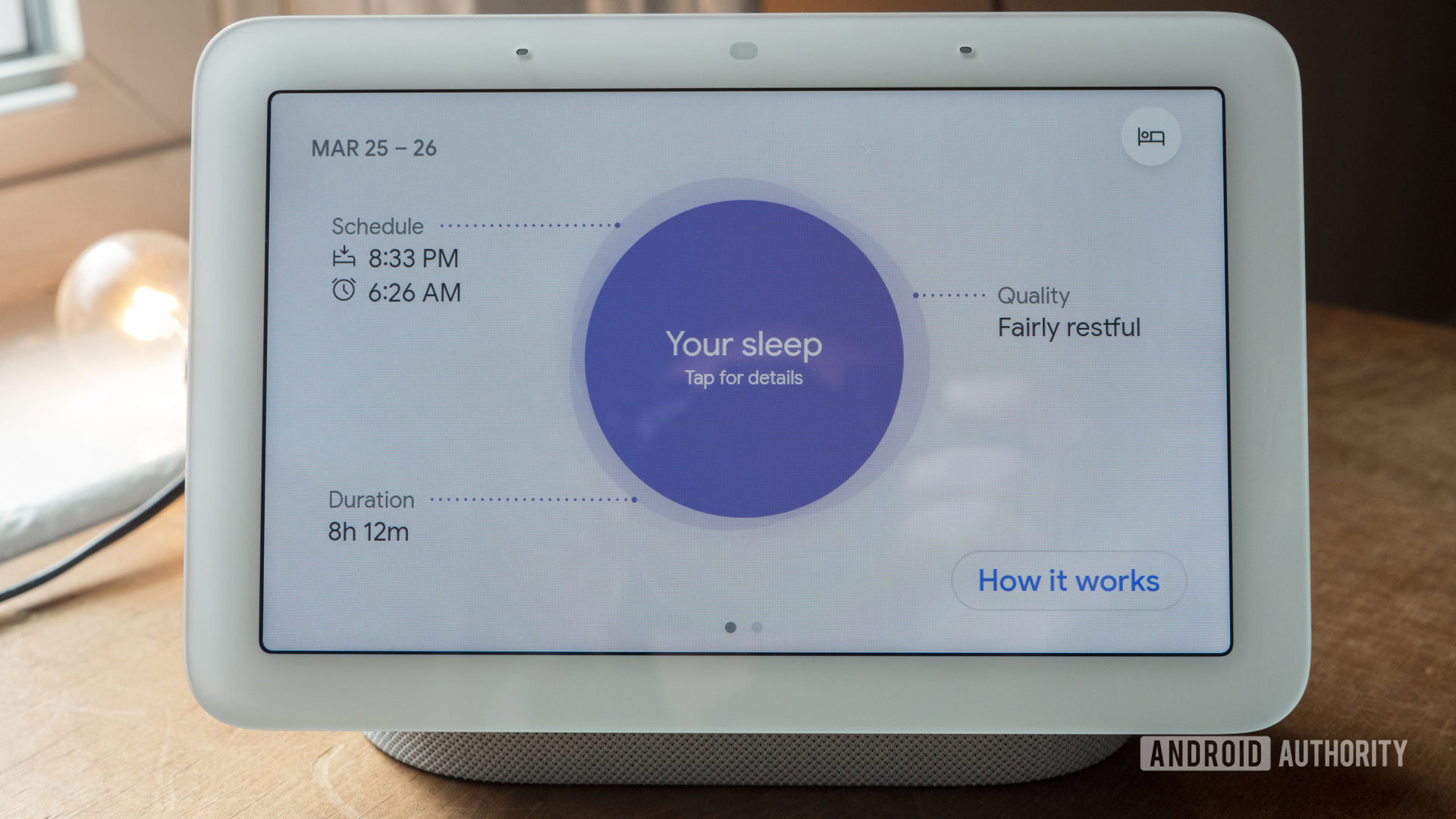
At this point, we’re all used to tracking sleep with our wearables — be it our fitness trackers or smartwatches. So why is sleep tracking on a smart display a big deal? Google says its new Sleep Sensing feature will not only be easier than tracking with a watch (you don’t have anything to put on your wrist), but it might actually be able to help you improve your sleep.
I can’t say it’s helped me improve my sleep, but it has given me important insights into my sleep quality.
The Nest Hub utilizes its new Soli sensor — in addition to its built-in temperature sensor as well as your room’s ambient sound and light — to track the following metrics: total time asleep, total time in bed, sleep efficiency (%), and respiratory rate. It’ll also track any sleep disturbances you may experience, like snoring, coughing, or change in your room’s light. All of this information is uploaded directly to Google Fit for your perusal in the morning.
In November 2021, Google issued a major Nest Hub update that brought sleep stage (light, deep, and REM) tracking to the smart display.
Naturally, the Nest Hub won’t be able to track important overnight metrics like blood oxygen saturation or heart rate. These are all things wearables can track. Because the Nest Hub is literally a radar sensor pointed at your sleeping body, there will be some limitations.
The Nest Hub needs to be pointed at your bedside in a particular way to get the Sleep Sensing feature to work. It should be within one foot of your mattress height in order to track your sleep. My bedside table is a little shorter, so I needed to put together a makeshift nightstand out of books in order to reach the proper height.
You might also have accuracy issues if you sleep with a pet on your bed. Google says having a big dog jump into your bed in the night can throw off the Nest Hub’s data. The company told Android Authority in a briefing that the Nest Hub might not be well-suited for people who have animals around at bedtime. As for those who share a bed with another person; as far as I can tell, the Nest Hub hasn’t once mistaken my wife for me in bed though, which is a good sign.
I’ve found the Nest Hub’s sleep tracking to be accurate compared to my other three main sleep trackers: the Garmin Forerunner 245 Music, Fitbit Sense, and Oura Ring 2. The Nest Hub usually catches when I fall asleep and wake up within a few minutes of doing so. Even the efficiency rating, shown as a percentage from 0-100, usually feels in-line with how I feel that day.
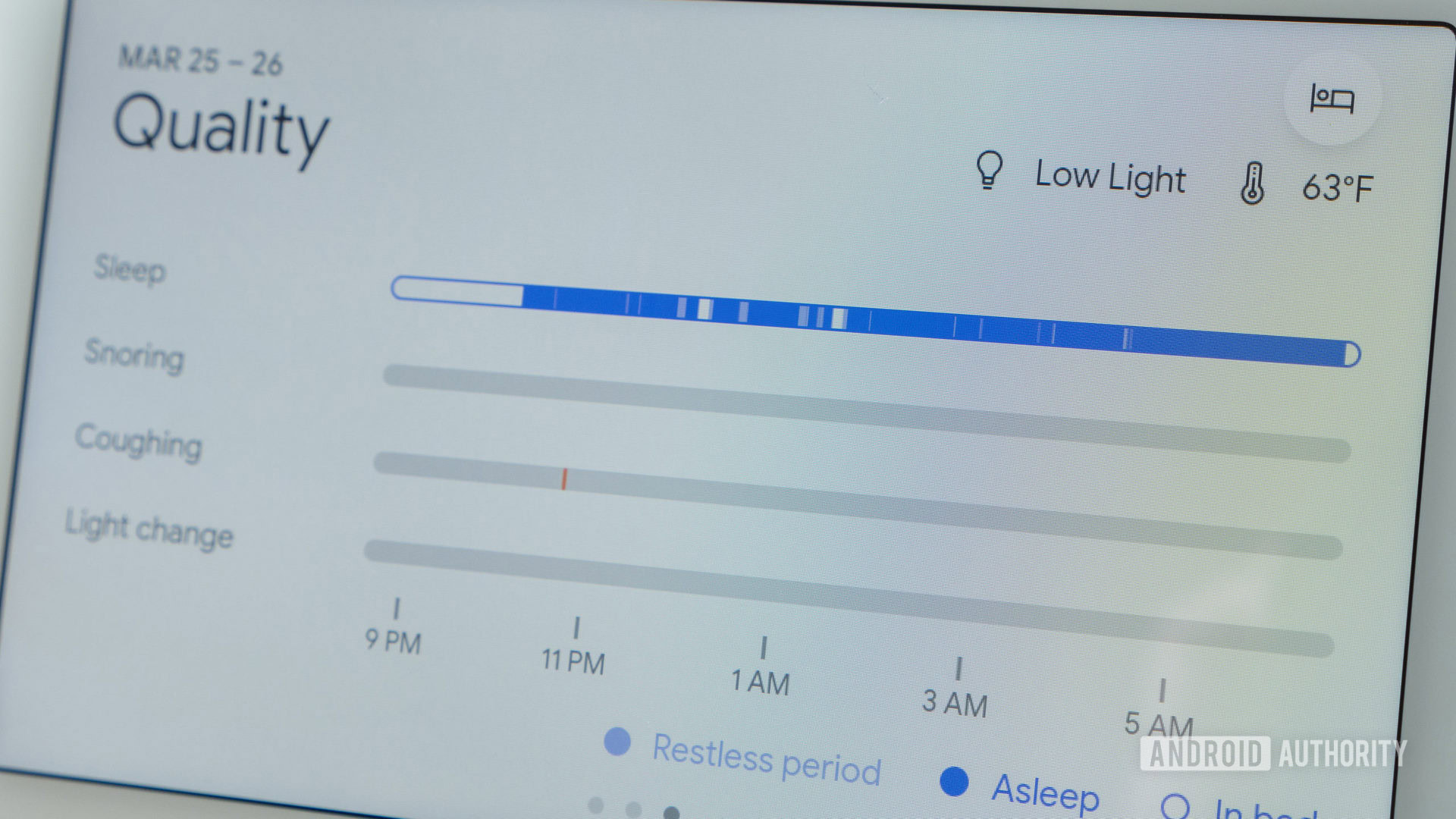
Not to brag, but I’d say my sleeping habits are pretty good. I fall asleep within a few minutes of lying down and I usually wake up at my first or second alarm in the morning. I rarely get up in the middle of the night and I never suffer from insomnia. Thus, my sleep disturbances section in Google Fit looks pretty bare. The snoring metric is always empty for me and there are never any changes to my room lighting or temperature at night.
I do cough a few times every night, though, and I can have restless nights every once in a while. Sleep tracking with the Nest Hub helped me figure out that I tend to cough more when I’m more restless at night. No analysis is given beyond that, but it’s something to think about.
If you're going to buy the new Nest Hub, I'd recommend doing so without putting too much stock in Sleep Sensing.
It’s easy to see the benefits of tracking things like coughing and snoring. However, I don’t have another device that can track these things and my wife sleeps through the night, so I don’t have a way of confirming that Google’s data is accurate.
Also, the Nest Hub’s respiratory rate tracking is comparable to my Forerunner 245 and Fitbit Sense. Average respirations per minute (rpm) are usually within one or two rpms of what Garmin and Fitbit report.
How well does Google Fit handle sleep data?
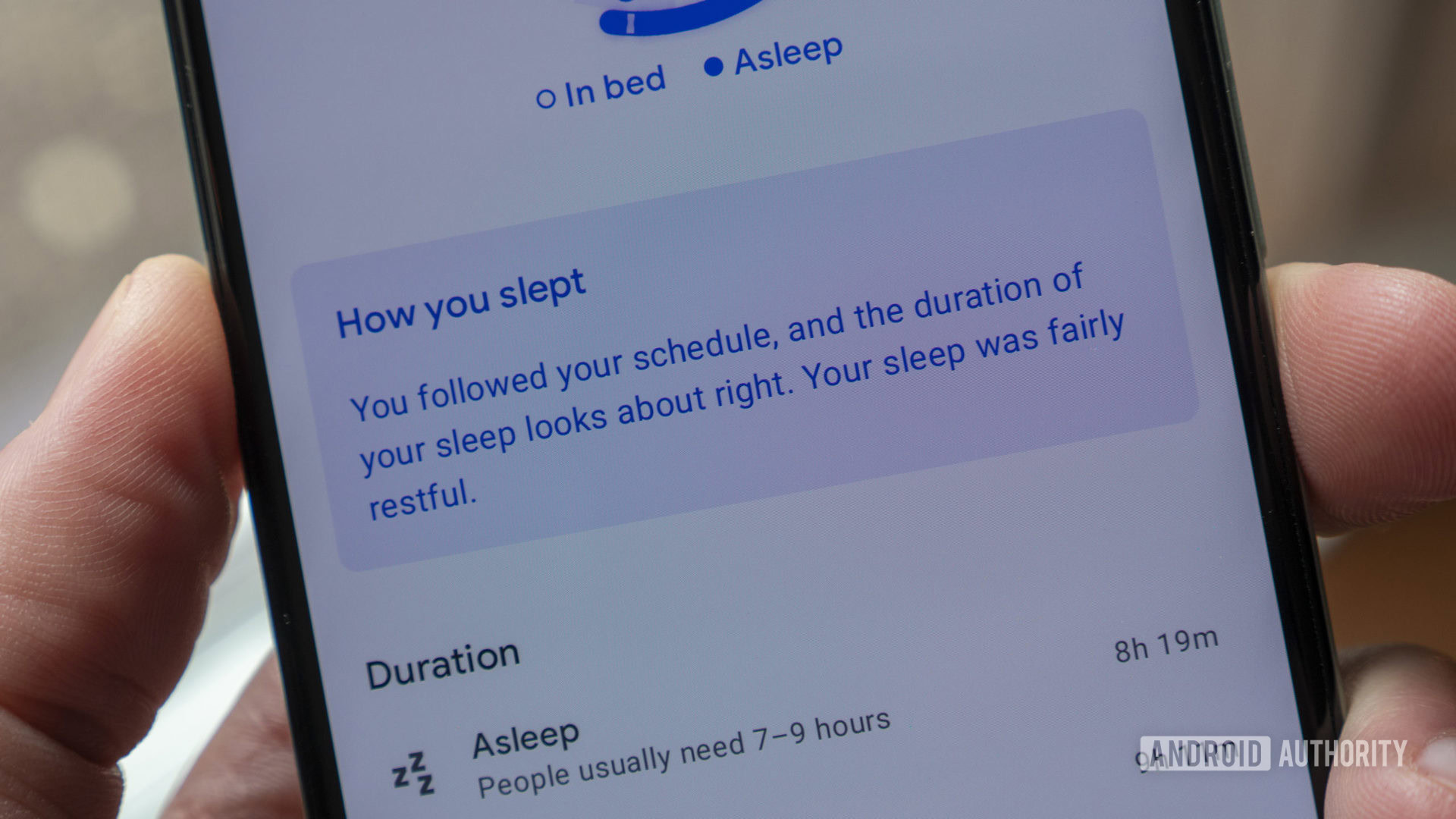
Oftentimes, fitness apps struggle to present data in a cohesive, helpful way. It’s one thing to track certain metrics, but how do you make that data make sense to the end-user? Google Fit gets a lot right in this sense but falls short in some other areas.
First, the positives. I’ve really enjoyed Google Fit’s personalized sleep insights, which appear after a week or so of using sleep tracking on the Nest Hub. I’ve been getting a fair amount of good-quality sleep over the last week and Google Fit usually has something useful to say about it. Sometimes it’s simply: “You woke up on time and the duration of your sleep looks about right. Your sleep was fairly restful.” On more restless nights, Google Fit will say “Your sleep was restless, so look out for things that might affect sleep quality.”
I still have a lot of gripes with the way Google Fit presents data. It’s simple to a fault. You cannot expand the app’s smoothed-out graphs to a larger view to dig into the data. This is at least the case for respiratory rate graphs and heart rate graphs.
Sleep insights can be useful, but Google Fit is still simple to a fault.
Speaking of respiratory rate, I think Google Fit could do a better job at explaining what it is, what you should be shooting for, and what your overall trends mean. All you get is a small respiratory rate graph that shows your average respirations per minute. There’s no analysis of your respiratory rate presented in the graph; you presumably need to do all the analyzing on your own.
I’ve found other little irritations in the Google Fit app — such as not being able to access sleep details from the home screen and certain sleep events sporadically missing from the Journal tab — but I’ll let you read more about Google Fit in our guide linked below.
Google Nest Hub (2nd gen) privacy and data
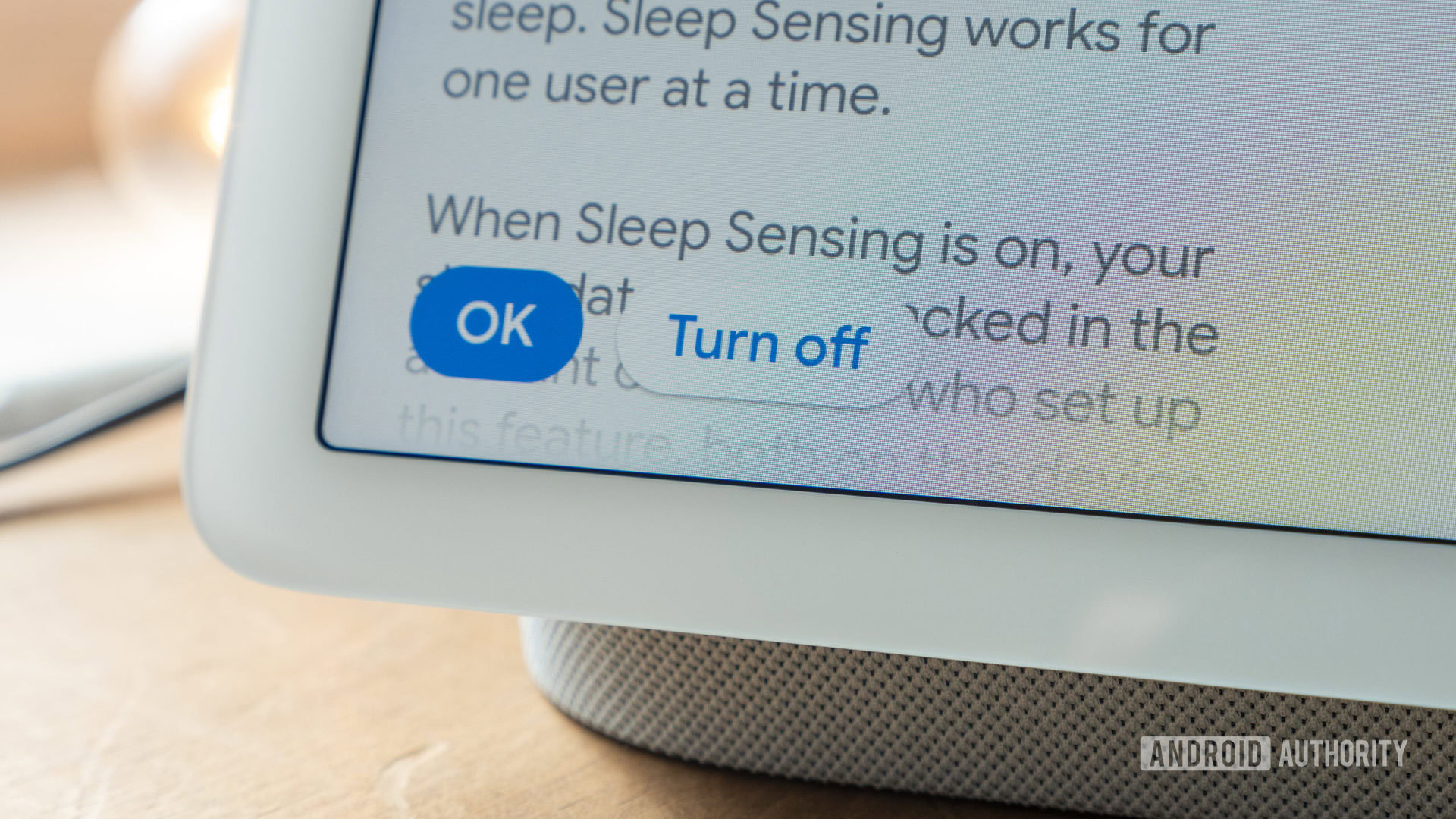
You don’t need to use sleep tracking on the Nest Hub if you don’t want to. Even if you do, the data Google collects can be deleted. You can delete your previous night’s sleep data up to two hours after you get out of bed. And it’s extremely easy to pause Sleep Sensing on the Nest Hub in case you’d like to, ahem, cozy up with someone in bed during the night. There’s a small icon on the display when Sleep Sensing is turned on to let you know the Nest Hub is recording. Google made it a point to ensure skeptical folks that “nothing is recorded unless you explicitly enable it.”
It's nice to see Google taking a privacy-first approach to Sleep Sensing.
In fact, the data the Nest Hub gathers about your body is not all that interesting to the human eye anyway. See below for a real readout of what the Nest Hub sees at night:
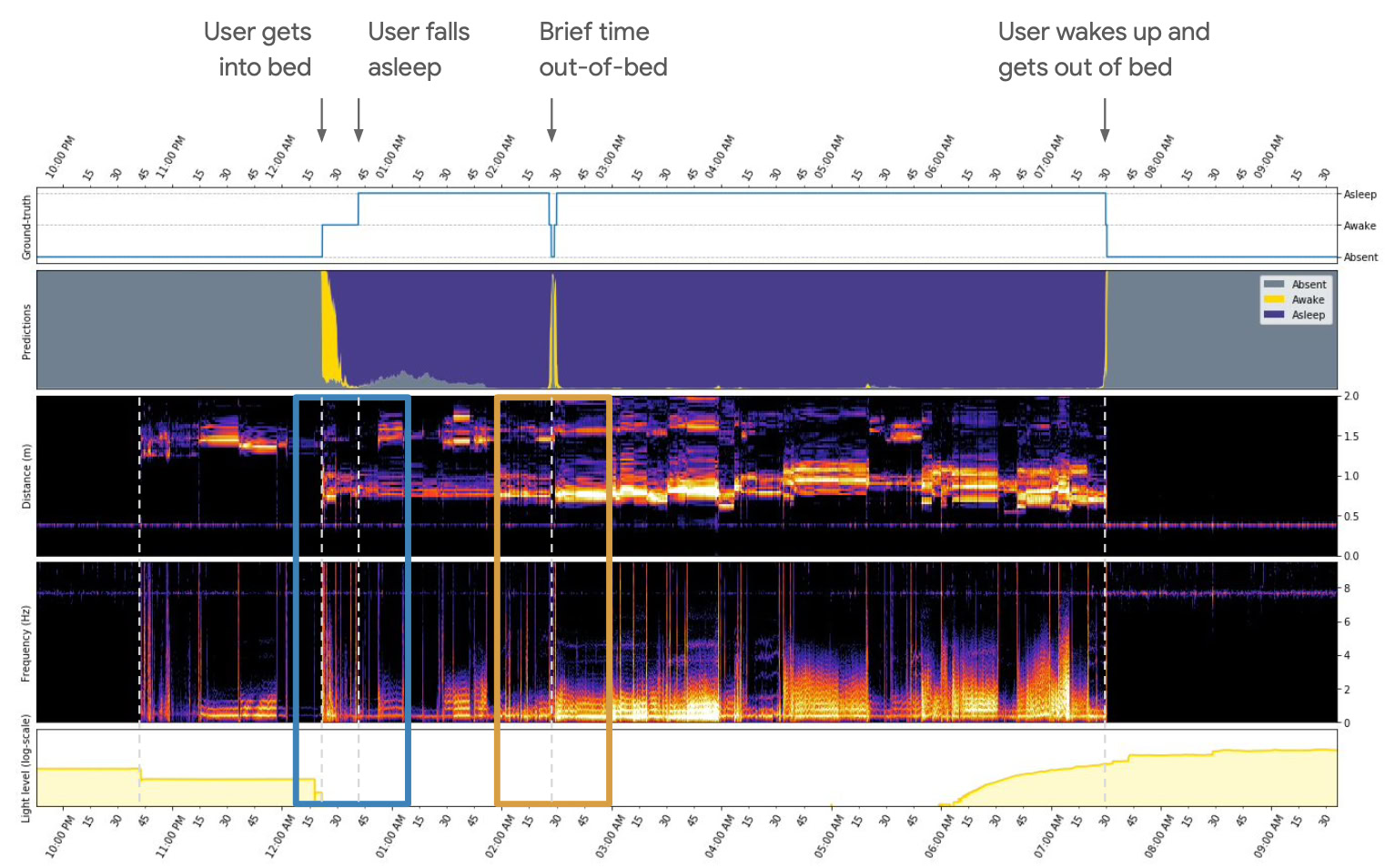
Google says recorded audio from coughing and snoring and raw Soli data is all processed on the Nest Hub itself, though extrapolated sleep event data is sent to the company’s servers. You can delete sleep event data once it’s made its way to Google Fit, too.
One of the nicest privacy features on the Nest Hub is that you can enable/disable most aspects of sleep tracking. If you don’t want Google recording your nighttime audio for coughing and snoring, just turn it off. You’ll still be able to track your sleep, but the Nest Hub won’t record any audio.
You can read more about the sensors in the Nest Hub (2nd gen) here.
Anything else?
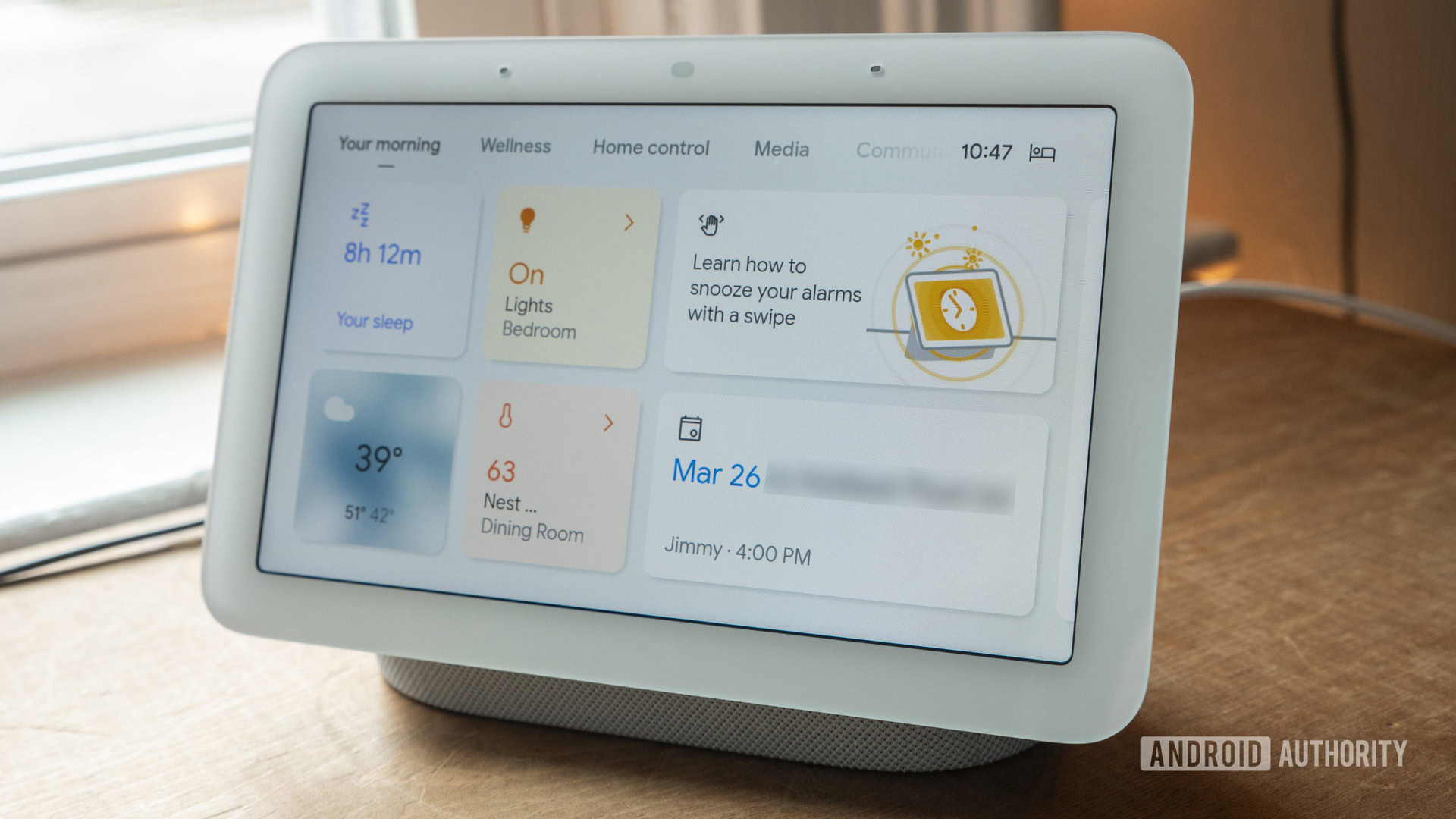
- Ambient EQ: The new Nest Hub’s display is essentially unchanged from the original, and that means Google included its Ambient EQ feature on this model. The brightness and color temperature of the display changes throughout the day based on your room’s ambient lighting. It works well and I have not noticed any wonky behavior with it.
- Performance: The new Nest Hub is powered by a faster processor. Since the smart display has more to process at any given time, performance is about on par with what you’d find on the first-gen Nest Hub. The UI can unfortunately drag at times. As previously mentioned though, it still answers voice commands quickly.
- Software: As mentioned, the Nest Hub (second generation) is running on the same software interface that you’d find on the first-gen Nest Hub and Nest Hub Max. You still have access to “your day” summaries, as well as home control, media, communicate, family, and discover tabs. Google Duo audio calls are still supported, too.
- Getting ready for bed: I like that the Nest Hub helps you get ready to wind down for the night. Right before bed, the display switches to dark mode, and you’re given easier access to your smart home controls and suggestions to play relaxing sounds.
- Sunrise Alarms: The new Nest Hub supports Sunrise Alarms, which are special alarms that gradually increase the brightness of your screen about 30 minutes before you wake up. They’re fantastic and I’ve used them every day.
- You can, of course, set normal alarms on the Nest Hub as well.
- Recycled design (in a good way!): Eco-conscious buyers will be happy to hear 54% of the new Nest Hub’s plastics are made from recycled materials.
- Four colors to choose from: You can buy the Nest Hub (second generation) in four colorways: Mist (the color of our review unit), Chalk, Charcoal, and Sand.
Google Nest Hub (2nd gen) specs
| Google Nest Hub (second generation) | |
|---|---|
Display | 7-inch touchscreen 1,024 x 600 resolution |
Dimensions and weight | 177.4 x 120.4 x 69.5mm 558g Power cable: 1.5m |
Colors | Chalk, Charcoal, Sand, Mist |
Speaker and mics | Full-range speaker with 43.5mm driver 3 far-field microphones Microphone-off switch |
Sensors | Soli sensor for Motion Sense Ambient EQ light sensor Temperature sensor |
Ports | DC power jack |
Power | 15W power adapter |
Connectivity | 802.11b/g/n/ac (2.4GHz/5GHz) Wi-Fi 802.15.4 (at 2.4GHz) Thread (not yet available) Bluetooth 5.0 Chromecast built in |
Processor | Quad-core 64-bit 1.9GHz ARM CPU High-performance ML hardware engine |
Value and competition


The new Google Nest Hub’s biggest competition is the Amazon Echo Show 8 ($129 at Amazon). That 8-inch smart display is normally more expensive than the Nest Hub, but often goes on sale for far less than the MSRP. Amazon’s device works best with other Amazon products, so you’ll want to check out Amazon’s display if you’re more of an Alexa and Prime Video person.
Amazon’s Echo Show 5 ($84.99 at Amazon) is another worthy alternative to the second-gen Nest Hub. It’s cheaper at $85 and again is frequently on sale, though it’s smaller at 5.5 inches and has a lower-resolution display.
The Google Nest Hub (2nd gen) has competition in the smart display space, but not when it comes to bedside sleep tracking. No other smart display offers that feature. There are other non-wearable sleep tracking devices to consider if you simply want a hands-off way to track your sleep. The Withings Sleep mat ($129 at Amazon) is the first that comes to mind. You place the mat under your mattress and it automatically tracks your sleep stages, heart rate, and detects snoring (just not coughing). It costs about as much as the new Nest Hub, and there’s no threat of a subscription fee.
The Google Pixel Tablet ($499 at Amazon) is also worth mentioning here. The company’s first Android slate in years doubles as a smart display when placed on its dock. This design makes for a more portable smart display for those who dislike the fixed and rigid designs of the Nest line. However, the Pixel Tablet isn’t really competing in the same space as the Nest Hub (2nd gen) as it lacks sleep tracking features and Soli integration. It’s also much pricier and limited in availability. Of course, if you have an additional device for sleep tracking, the Pixel Tablet effectively gives you a cheap tablet and smart display in one.
Google Nest Hub (2nd gen) review: The verdict
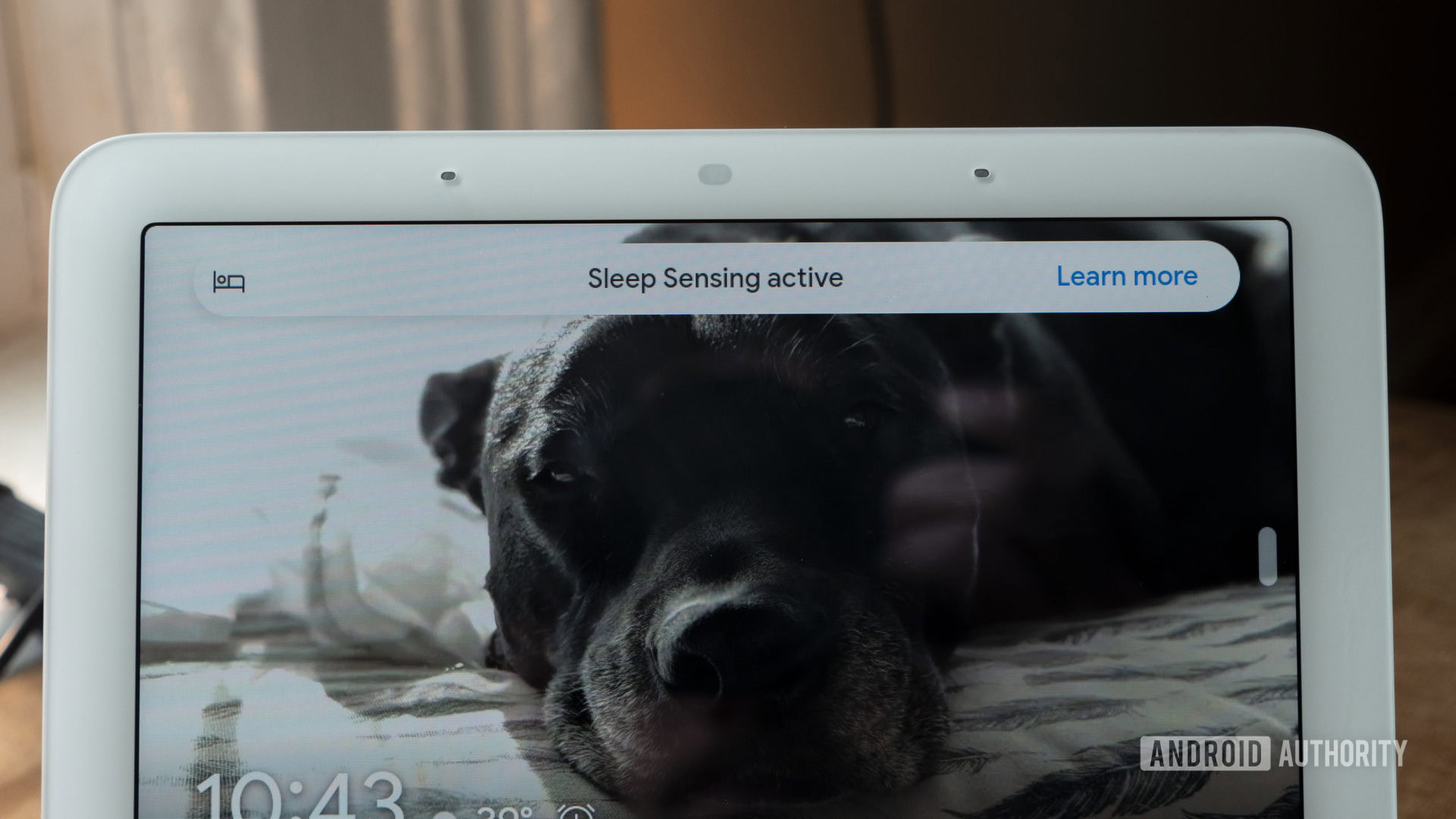
The new Google Nest Hub is a fantastic smart display and a surprisingly good follow-up to the first-generation model. It’s made even better with the reduced price tag, which again is $30 cheaper than the already-cheap original. What’s not to like about a cheaper, better piece of technology?
The Google Nest Hub (2nd gen) is cheaper and all-around better than the original. Who can argue with that?
If you’re going to buy the new Nest Hub — which I think you should absolutely consider — I’d recommend doing so without putting too much stock in Sleep Sensing. Even though it’s proven to be accurate in our testing and could benefit people who struggle with their sleeping habits, paying for the service, even if it’s part of a larger fitness subscription, does not seem worth it. The only reason you should consider the Nest Hub for its sleep tracking is if you’re already a Fitbit Premium user or if you don’t like wearing a fitness device to bed to track your sleep.
Google Nest Hub (2nd gen) top questions and answers
No, you won’t find a camera on the Google Nest Hub (2nd gen). You will find it on the larger Google Nest Hub Max, though.
No, you can’t install third-party apps on the Google Nest Hub (2nd gen).
It depends on what you’re looking for. The Google Nest Hub Max has a larger display (10-inch vs 7-inch) and features a built-in Nest Cam. So if you want a larger display and would like to make video calls with your smart speaker, the Google Nest Hub Max is for you. But if you don’t care about these things and just want a smart speaker that does the basics, the Google Nest Hub (2nd gen) is the better option
While the original Google Nest Hub is still a great device, we don’t recommend you buy it. First, it’s hard to get your hands on it since most retailers don’t have any stock left. And second, the price difference between the original and the current model isn’t big since the Google Nest Hub (2nd gen) is often on sale.
Yes, you can make calls with your Google Nest Hub (2nd gen) via Google Duo, but the person on the other side won’t be able to see you since the smart speaker doesn’t have a camera.
Yes, you can have two or more Google Nest Hubs (2nd gen) in one room and link them together.
If you plan on using the Google Nest Hub’s sleep tracking feature, you should place it next to your bed. If you won’t use that feature, you can place it anywhere you want.